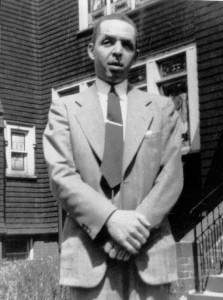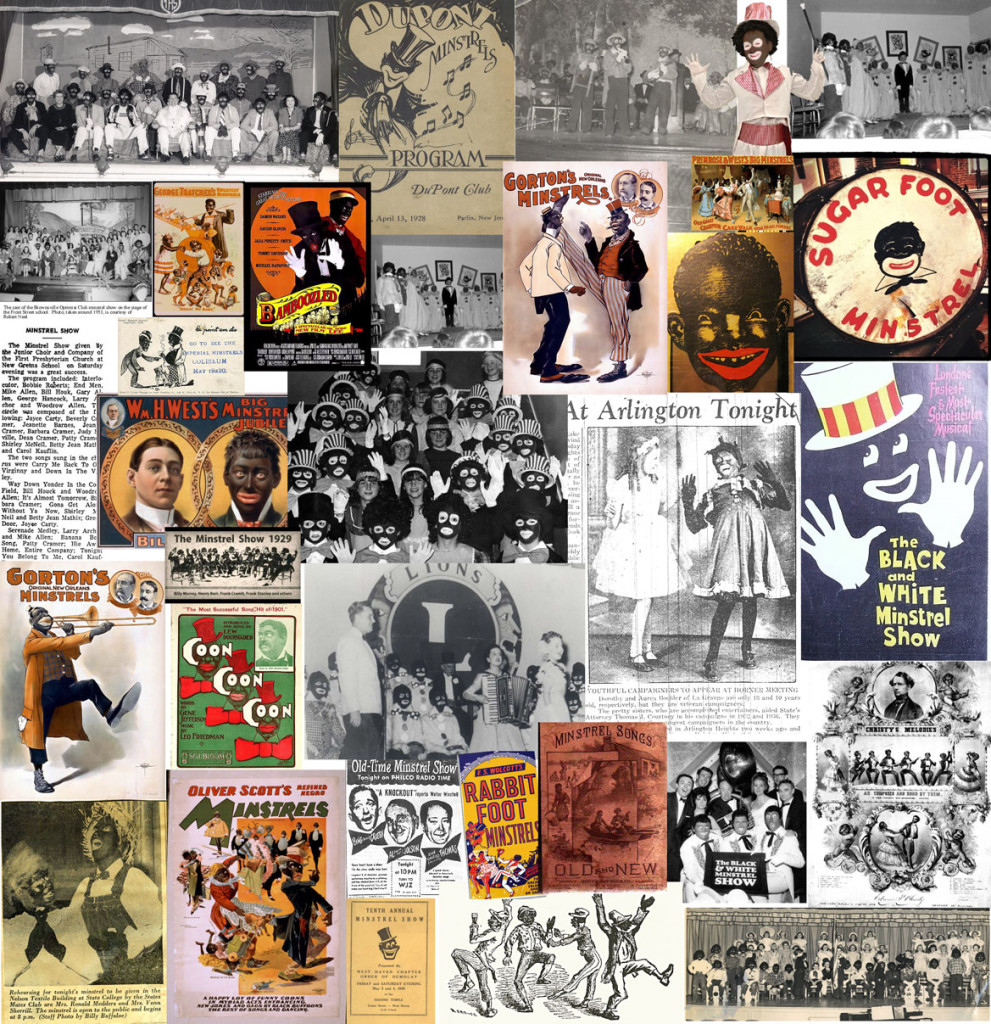Several weeks ago I read a post on Sheryl’s blog A Hundred Years Ago, about a school play put on in 1913 in which her Grandmother acted the part of Chloe, the maid, in black face. It wasn’t a minstrel show, but there was some discussion about what was accepted in those days and what is accepted now. I googled “minstrel shows” and found photos and articles which show minstrel shows occurring as late as the 1960s in the US. I didn’t realize how many schools, scouts and civic groups put on ministrel shows and plays using black face.
Later, I was looking through my father’s letters home to Detroit while he was a minister in Springfield, MA and I saw the article below about a church that was going to put on a minstrel show in 1947 in Springfield . The NAACP was trying to convince them that this was a bad idea that perpetuated stereotypes about black people that were not true. My father wrote the article below which appeared in the newspaper, The Springfield Republican.
The first link below goes to a page about blackface and racism, in the past and in the present, with links. The other pages are articles and pictures of minstrel shows from 1901 to 1967. I was surprised that there was a television show in Britain called “The Black and White Minstrel Show” that broadcast until 1978.
- Blackface! – The History of Black Racist Stereotypes
- The Last Minstrel Show – 1901 (Last one 1967)
- Minstrel Show At Trappe High School – 1951 & 1953
- The Junior Choir Minstrel Show -1957
- The Third Grade 1950 Minstrel Show
- Minstrel Show in Newspaper, April 11, 1960
- Golliwogg – Wikipedia
And a discussion of racism and stereotypes in comics




I’m glad my post got you started researching this topic. As usual, I’m impressed with your research. Your father explains so clearly why minstrel shows were problematic–and somehow the links to websites with photos of school minstrel shows (and the varying degrees of recognition by the webpage authors of the issues surrounding black face) really hit me.
Me too Sheryl. All those people without a clue about why it would be a problem.
There was indeed a BBC programme called the Black & White Minstral Show, I used to watch it with my Granmother. From memory they all wore suits, & a straw boater.
I remember it, too. It was on in the late Sixties when I was living in England. Many ordinary (white) people, even those who considered themselves progressive and anti-racist, had no idea that it might be offensive. That’s probably still the case for some, despite more than half a century of education about it.
This is a terrific post, and if it’s okay by you I would love to have some of my classes read your father’s letter and look at some of the images and links.
Of course you can share it! The more sharing, the better.
Yea Julie,I was thinking the same.Very Popular BBC Saturday night Primetime TV The Black & White Minstrel Show A really odd concept…..& it lasted until 1978!
I read that they continued touring until the late 1980s!
This morning I did a quick Google using my iPad and it linked up to a YouTube clip of part of the very last show. I had a quick watch (http://www.youtube.com/watch?v=KoYOraDt1_k)
This website provides a bit of detail – http://www.bbc.co.uk/archive/written.shtml?chapter=10
I have to say we never watched it with a negative view to either black or white performers, they could have been green with orange spots! – It was simply entertainment. Back in the 1970s there were only 4 channels, so viewing was very limited.
I recently read or watched a program which mentioned the Black & White Ministrels. I wish I could remember the details, if I think of it I will post a message, but it had an Australian link of that I am sure.
I think what this really shows is a movement in racial and social thinking. Even shows like this one, viewed now are seen as offensive and politically incorrect, yet they had their place in history and give an indication into the thinking (or not) of the time.
In much the same way as the toy “gollywog” – One of the jam companies here in the UK used to print little pictures on the labels – you save the labels and sent off for the soft toy. Mine had gone to toy heaven long ago, but whilst we were in Australia last year I saw a toy just like the one I had sitting in an antique shop window – I took a quick picture with my iPhone. Whereas, 30 year years ago these things existed, we look at things now very differently and that is what makes this element of social history fascinating.
Incidently Kristen. I love the collage!
Julie, I agree, it’s a sign of the times. And a sign of how far apart different communities were in terms of feelings about stereotypes.
Someone sent me a link to the Austrailian label for the label and toy. http://museumvictoria.com.au/collections/items/253095/biscuit-wrapper-arnott-s-golliwog-biscuits-1991
This is different from the toys we had in the UK – which I now remember were collected from consuming Robinsons Jam during the 1970s. As I said I took a picture of this Golly in an antique shop in Beechworth.
I found some others later that were similar to the white Raggedy Ann dolls, except for the slightly exaggerated features. I remember buying my oldest daughter a black Raggedy Ann doll in the 1970s. Their features were the same as those of the white dolls, their cloth faces and hands were dark brown fabric and they had the same red and white stripped legs.